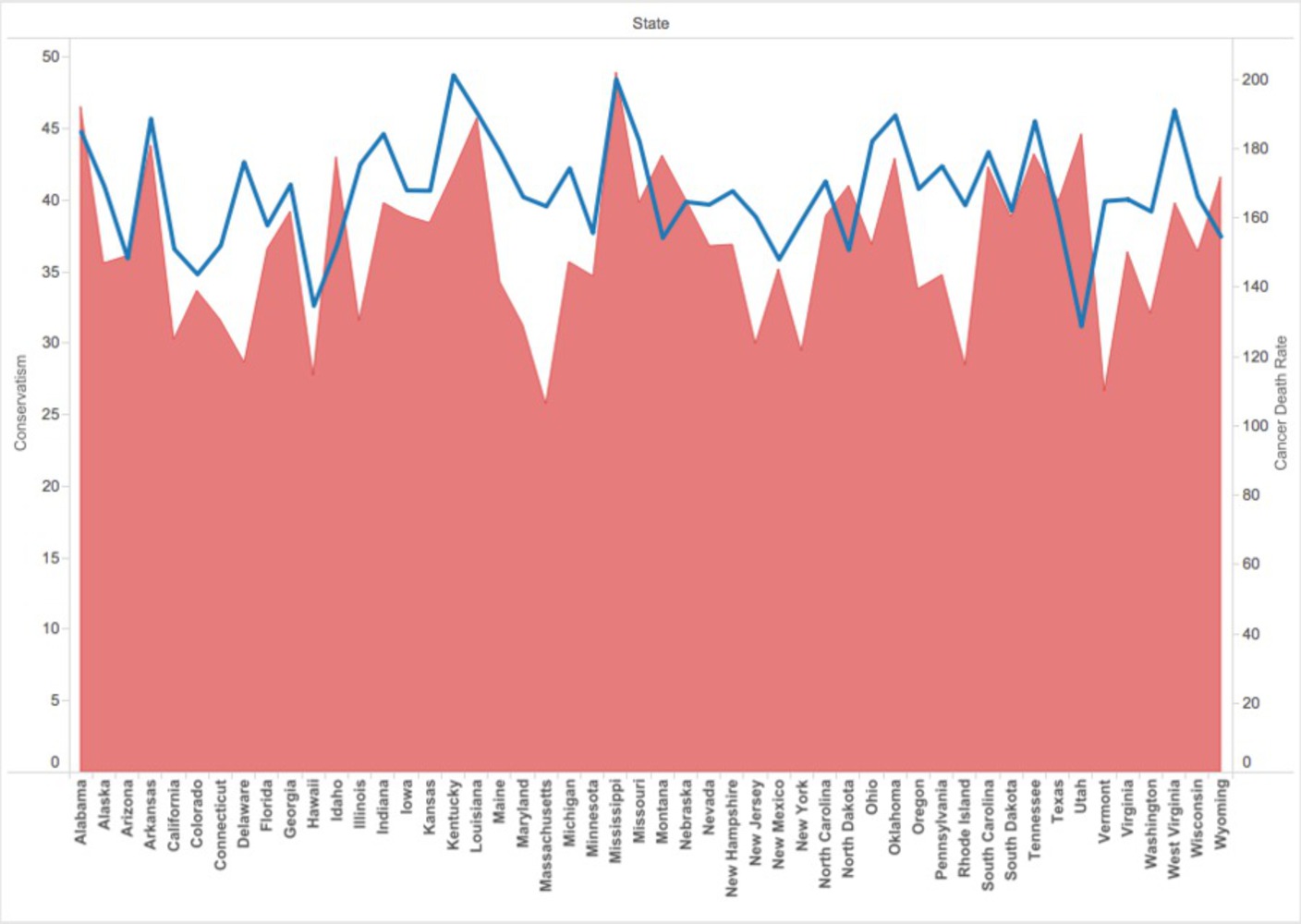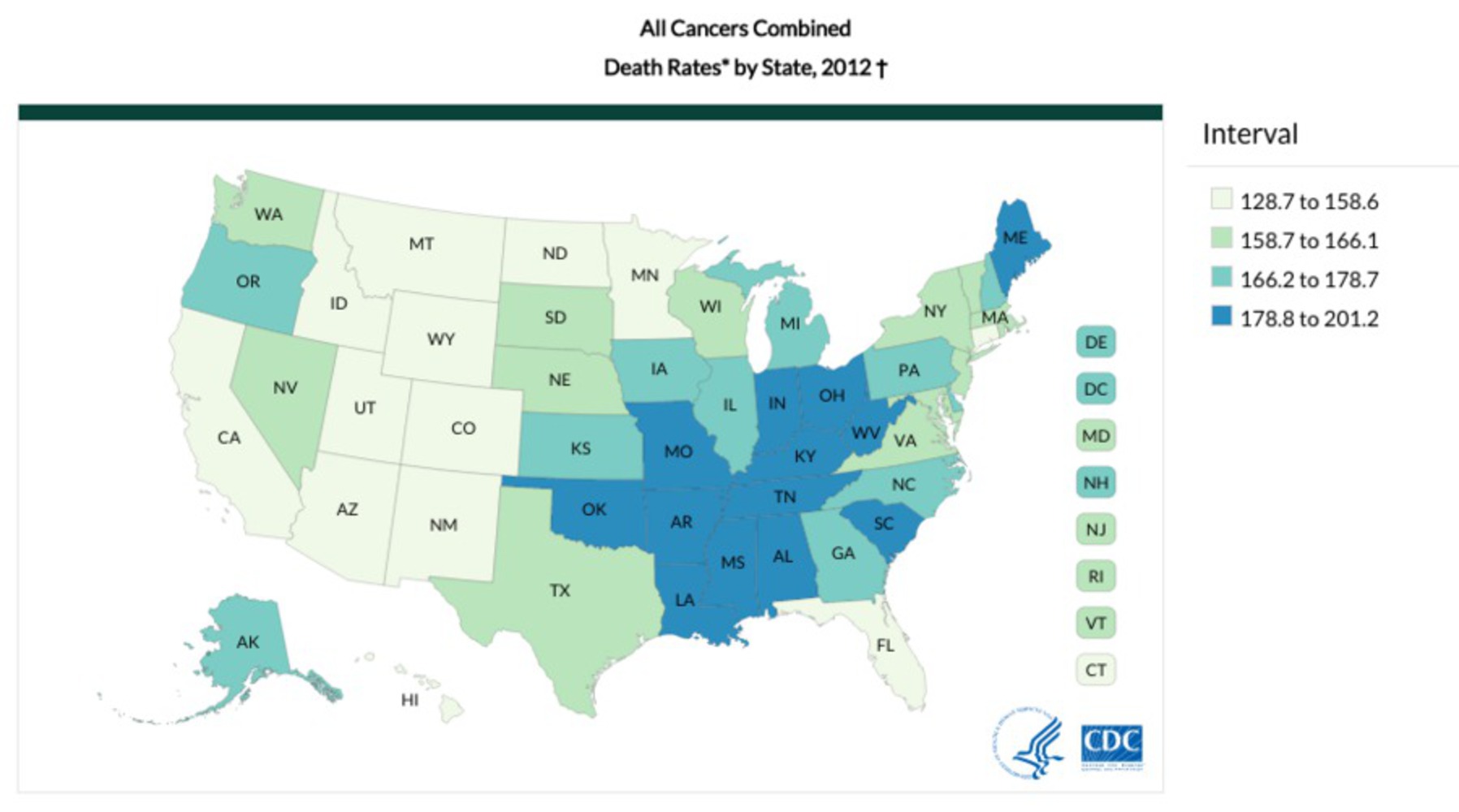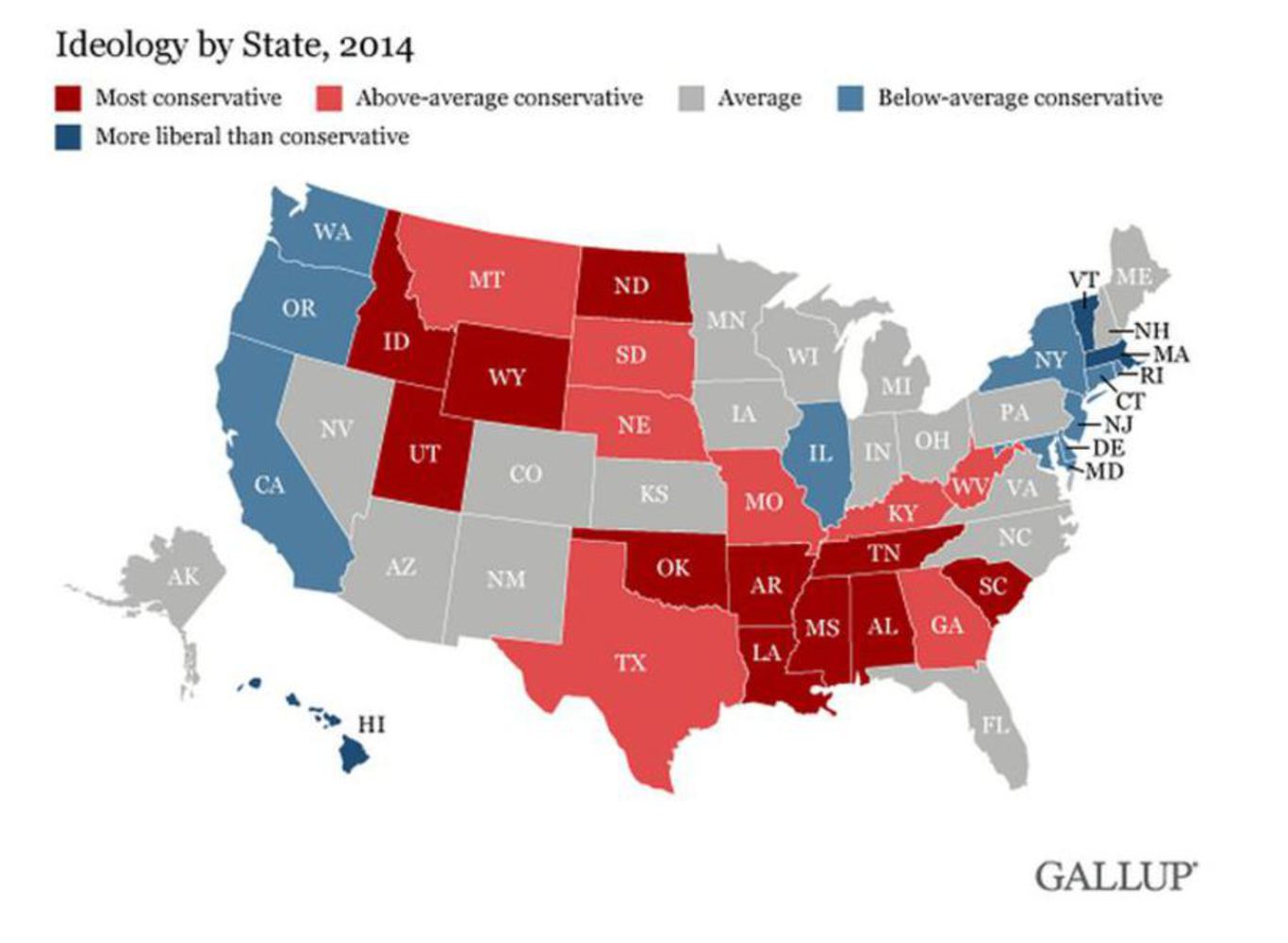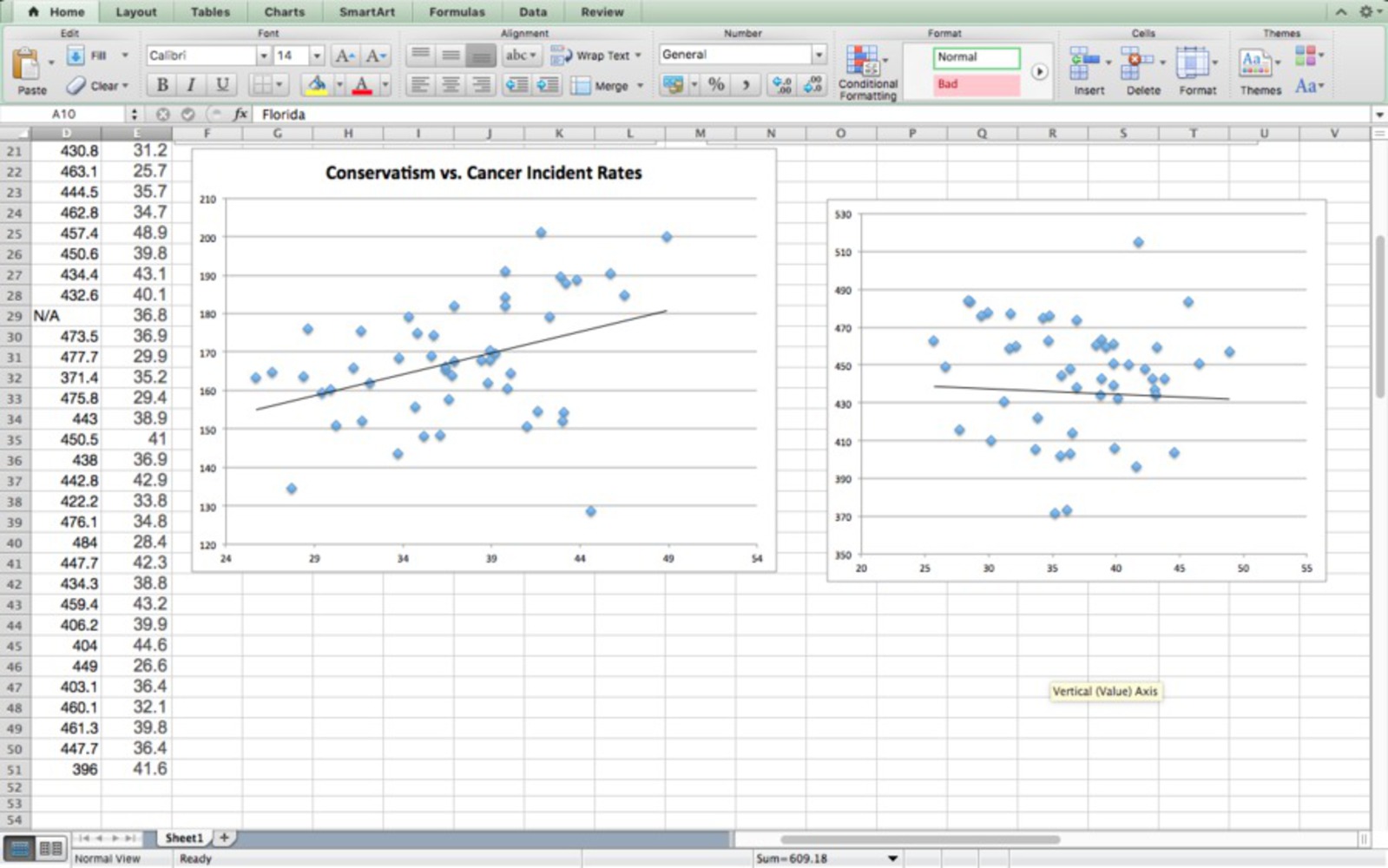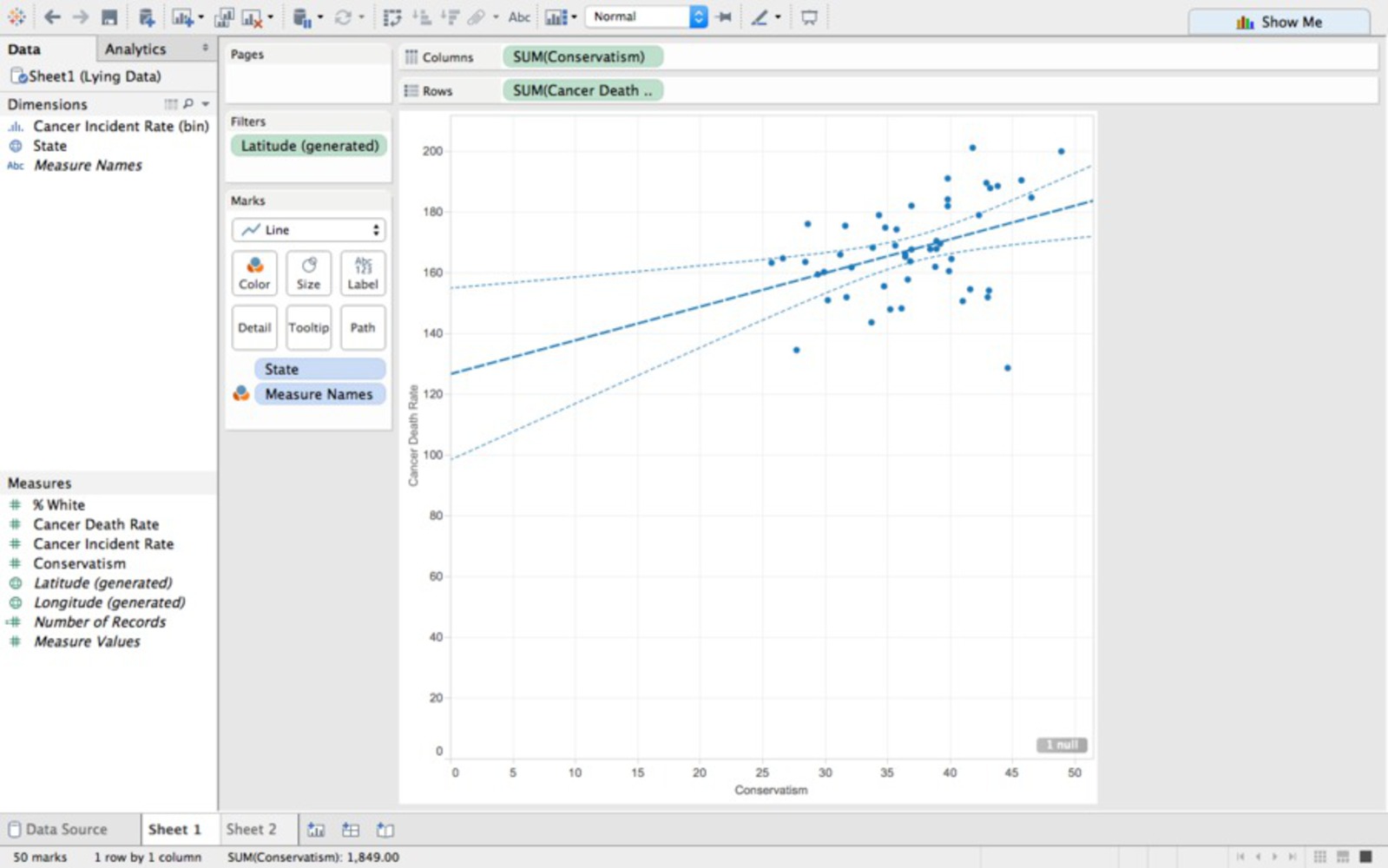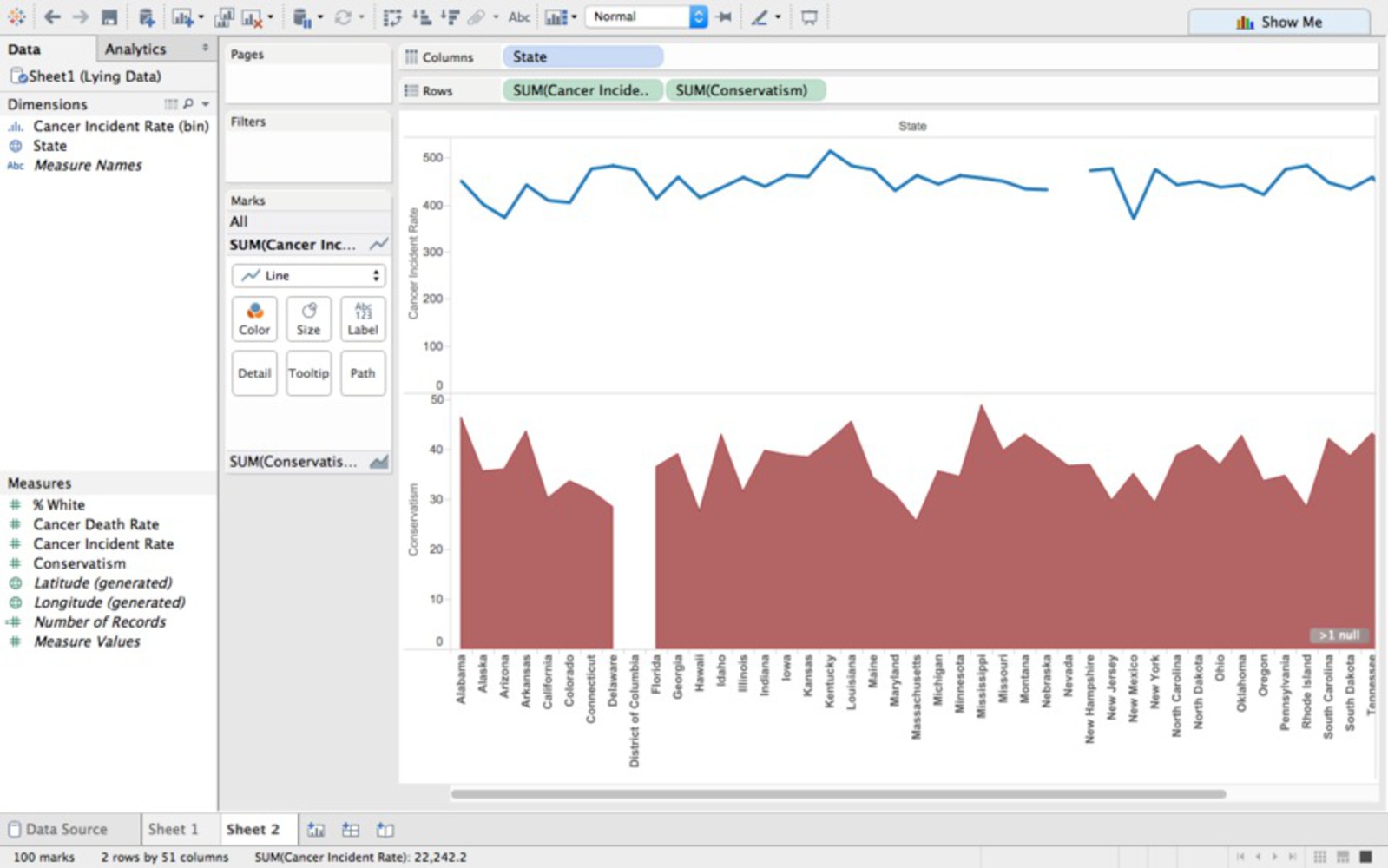Product
Using data about the political conservatism of each state, and the rates of cancer deaths of each state, I generated a line-and-area plot that correlates conservatism with cancer. I inputted the data into Tableau and fiddled around with the graphic options until I created something able to convince its audience these two occurrences are related, at a glance at least.
The axis to the left and the red plot represent political conservatism, while the axis to the right and the blue line represent cancer death rates; the bottom axis represents states.
What helps this graphic misrepresent data is the public's lack of familiarity with this kind of visual representation; most people aren't use to comparing data from this type of chart. What is evident is that conservatism and cancer death rates correlate around several key high points, making it appear as though there's a general trend.
